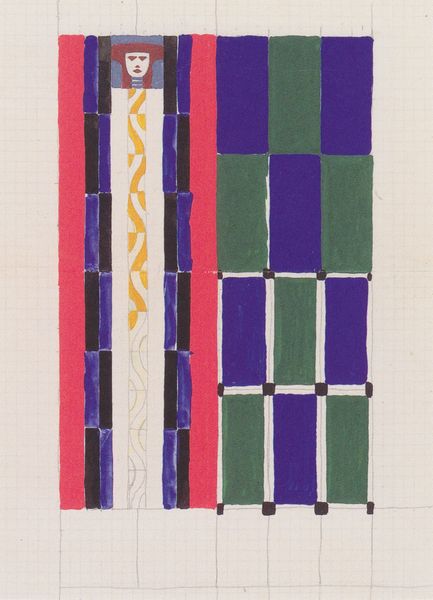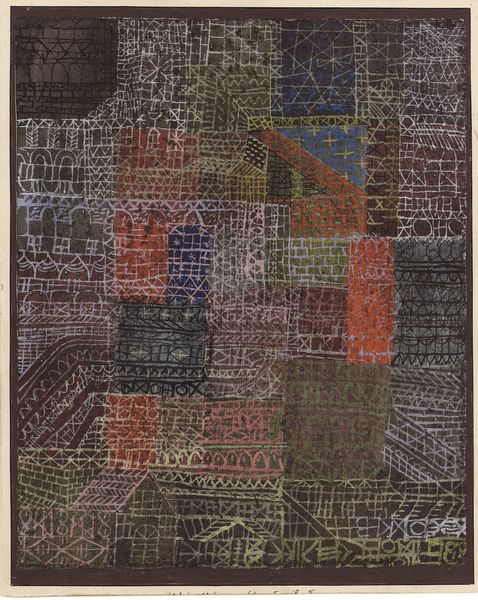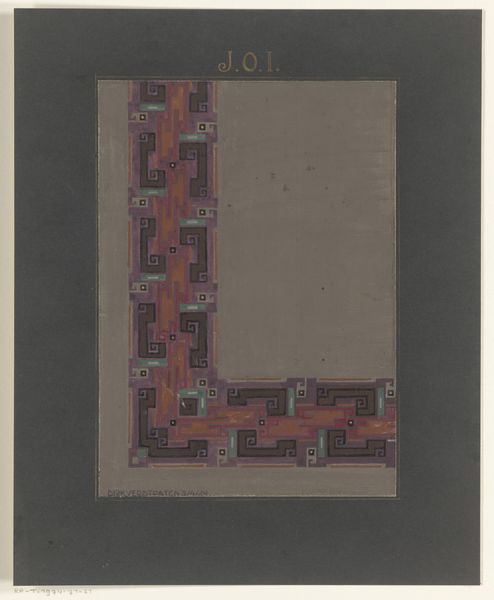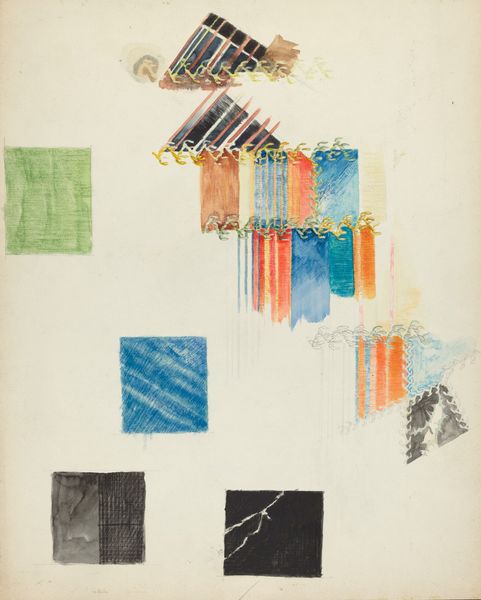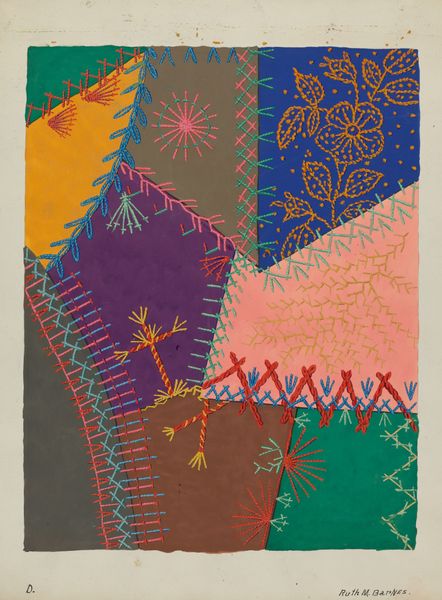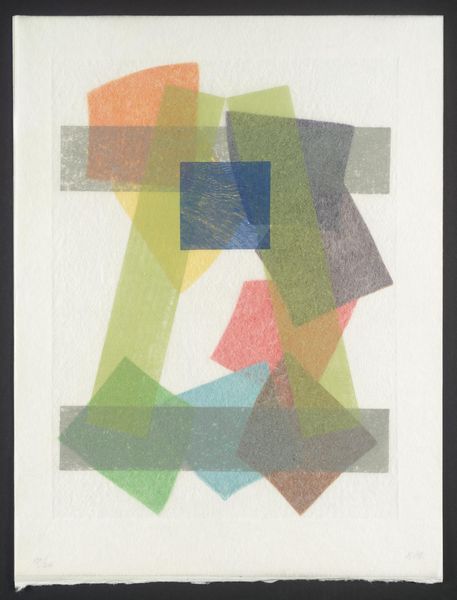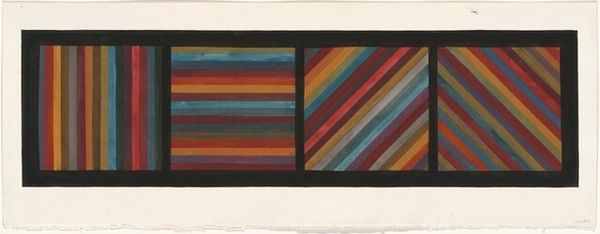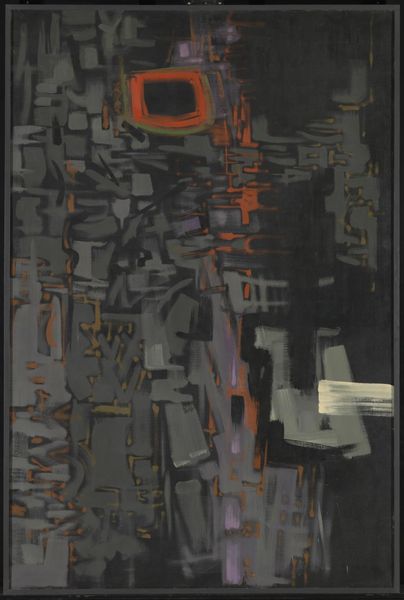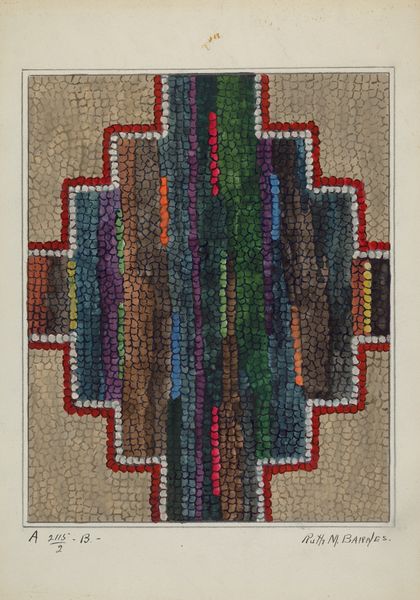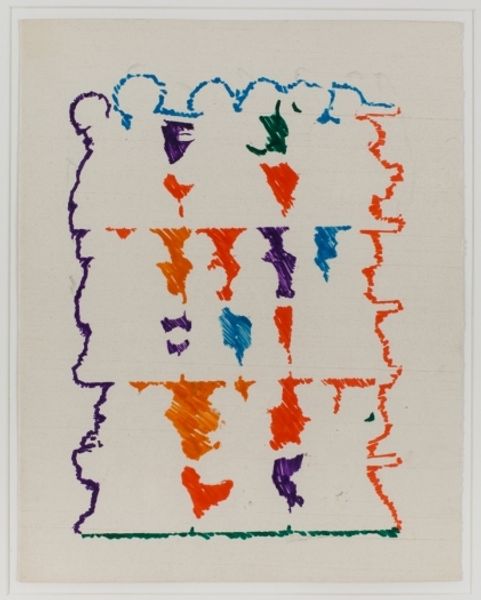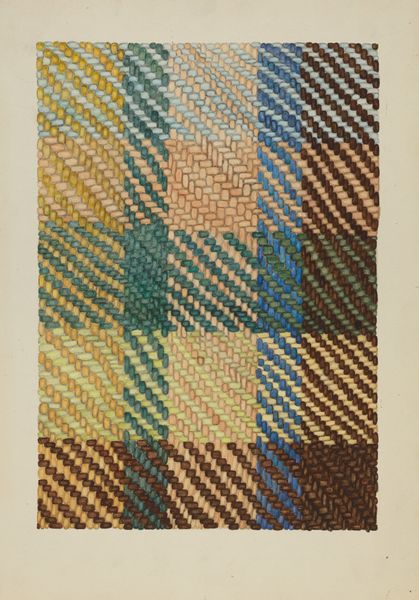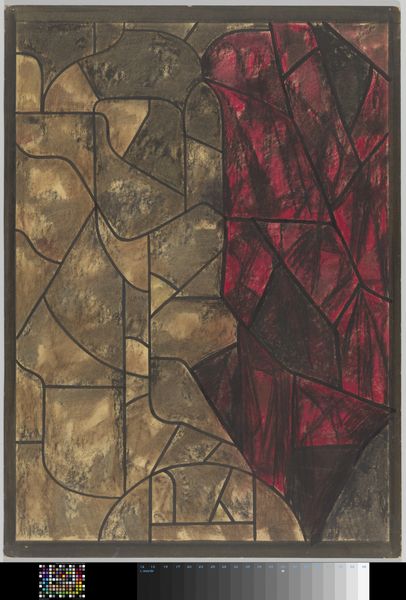
textile, watercolor
#
art-deco
#
water colours
#
pastel soft colours
#
textile
#
pastel colours
#
watercolor
#
geometric
#
abstraction
#
pastel tone
Dimensions: height 300 mm, width 219 mm
Copyright: Rijks Museum: Open Domain
Curator: Here we have "Ontwerp voor een tapijt met geometrisch patroon", a carpet design from circa 1923-1925 by Dirk Verstraten, primarily executed in watercolor. My immediate impression is its almost digital aesthetic, even though it predates computers! Editor: That's interesting. I’m struck by the integration of process here, literally with the sample of textile colors on the side. It provides vital context—the designer’s hand, the tangible origins of the intended woven artwork. We often forget the labour involved when focusing on the final "art" object. Curator: Yes, but notice the composition! The geometric patterns, those almost pixelated edges, create a powerful visual rhythm. And the interplay of light and shadow—it’s sophisticated. There is careful control within the constraints of its abstraction. Editor: Control, perhaps, but to what end? Look closer at those pastel colors, they're anything but assertive, they mute a forceful statement. Are we celebrating abstract form divorced from its social usefulness as something trod underfoot daily? Isn't function equally significant as form in judging this artwork’s success or failure? Curator: Fair point about utility, however I appreciate the dialogue between fine art and applied design the work provokes, wouldn't you agree it is powerful given the date it was created? Consider the context – Art Deco was exploding then! There is even an underlying sense of classical proportions amidst all that geometric abstraction! Editor: I’m still drawn to those color swatches; for me, they foreground the labour and materiality inherently crucial yet so frequently overlooked if we center on formal beauty alone. Where was it made? Who would have woven this? These production factors matter, informing and complicating simplistic aesthetics judgements Curator: I admit considering the end product as a marker of success of production introduces fascinating implications, especially concerning how social stratification impacts who profits. Editor: Precisely, making this more than mere aesthetics—this invites analysis into consumerism! Curator: Quite illuminating how this aesthetic design also encapsulates social questions relevant today. Editor: Yes, it challenges how "art" often conveniently detaches from labor and social context it springs from!
Comments
No comments
Be the first to comment and join the conversation on the ultimate creative platform.
